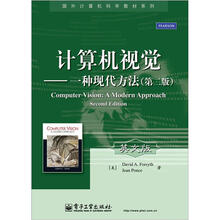I IMAGE FORMATION
1 Geometric Camera Models
1.1 Image Formation
1.1.1 Pinhole Perspective
1.1.2 Weak Perspective
1.1.3 Cameras with Lenses
1.1.4 The Human Eye
1.2 Intrinsic and Extrinsic Parameters
1.2.1 Rigid Transformations and Homogeneous Coordinates
1.2.2 Intrinsic Parameters
1.2.3 Extrinsic Parameters
1.2.4 Perspective Projection Matrices
1.2.5 Weak-Perspective Projection Matrices
1.3 Geometric Camera Calibration
1.3.1 ALinear Approach to Camera Calibration
1.3.2 ANonlinear Approach to Camera Calibration
1.4 Notes
2 Light and Shading
2.1 Modelling Pixel Brightness
2.1.1 Reflection at Surfaces
2.1.2 Sources and Their Effects
2.1.3 The Lambertian+Specular Model
2.1.4 Area Sources
2.2 Inference from Shading
2.2.1 Radiometric Calibration and High Dynamic Range Images
2.2.2 The Shape of Specularities
2.2.3 Inferring Lightness and Illumination
2.2.4 Photometric Stereo: Shape from Multiple Shaded Images
2.3 Modelling Interreflection
2.3.1 The Illumination at a Patch Due to an Area Source
2.3.2 Radiosity and Exitance
2.3.3 An Interreflection Model
2.3.4 Qualitative Properties of Interreflections
2.4 Shape from One Shaded Image
2.5 Notes
3 Color
3.1 Human Color Perception
3.1.1 Color Matching
3.1.2 Color Receptors
3.2 The Physics of Color
3.2.1 The Color of Light Sources
3.2.2 The Color of Surfaces
3.3 Representing Color
3.3.1 Linear Color Spaces
3.3.2 Non-linear Color Spaces
3.4 AModel of Image Color
3.4.1 The Diffuse Term
3.4.2 The Specular Term
3.5 Inference from Color
3.5.1 Finding Specularities Using Color
3.5.2 Shadow Removal Using Color
3.5.3 Color Constancy: Surface Color from Image Color
3.6 Notes
II EARLY VISION: JUST ONE IMAGE
4 Linear Filters 107
4.1 Linear Filters and Convolution
4.1.1 Convolution
4.2 Shift Invariant Linear Systems
4.2.1 Discre

 缺书网
缺书网 扫码进群
扫码进群




